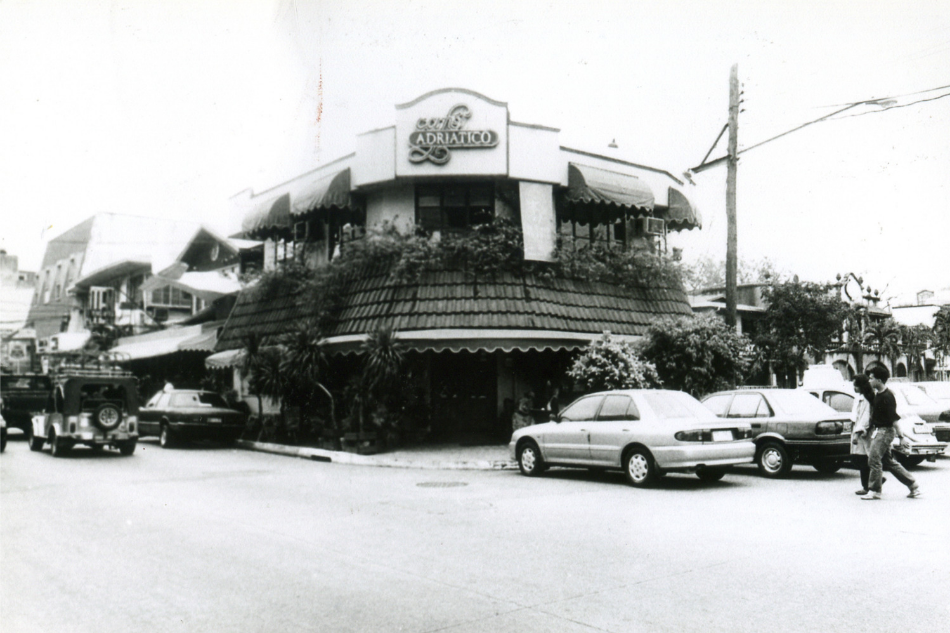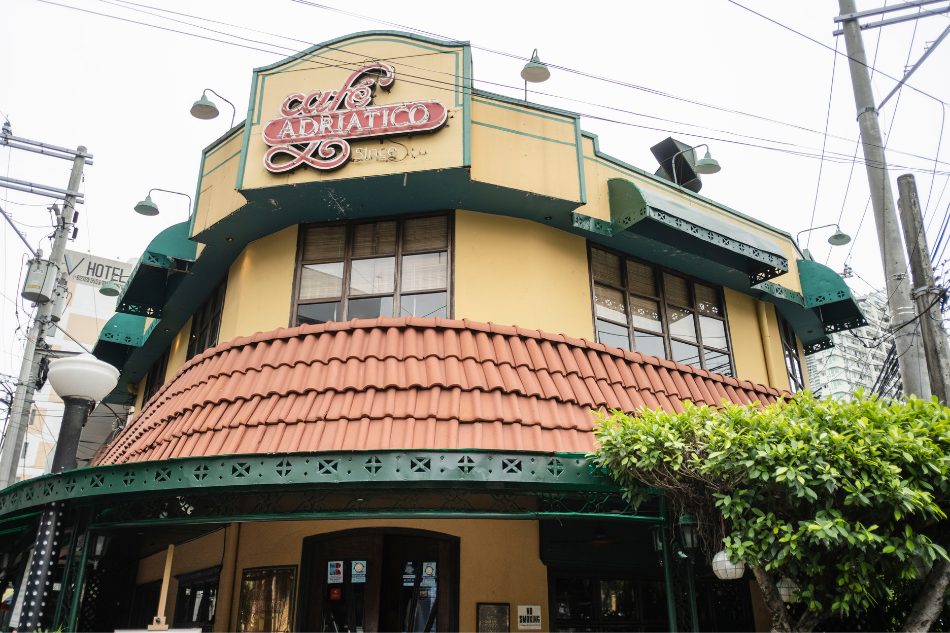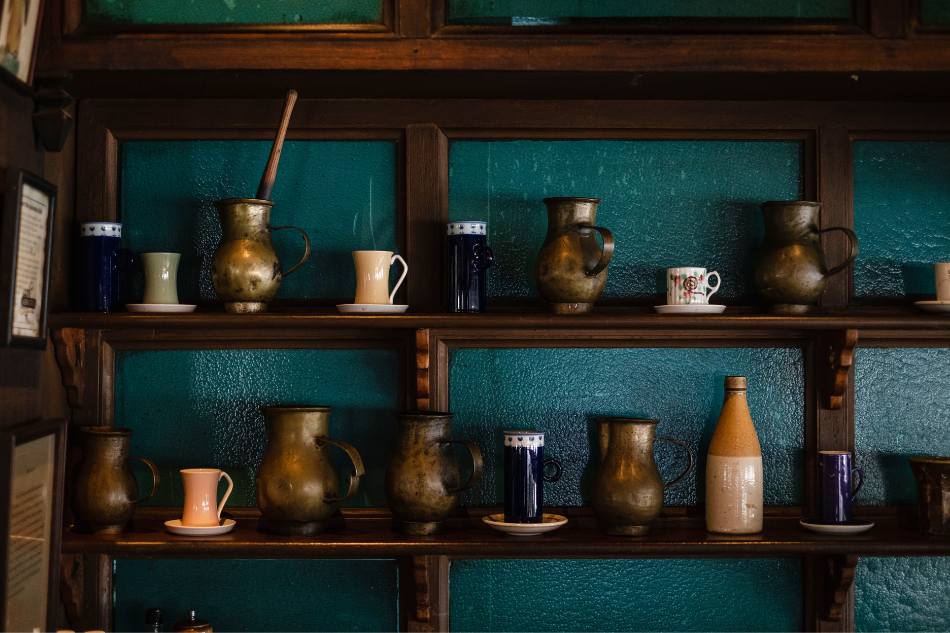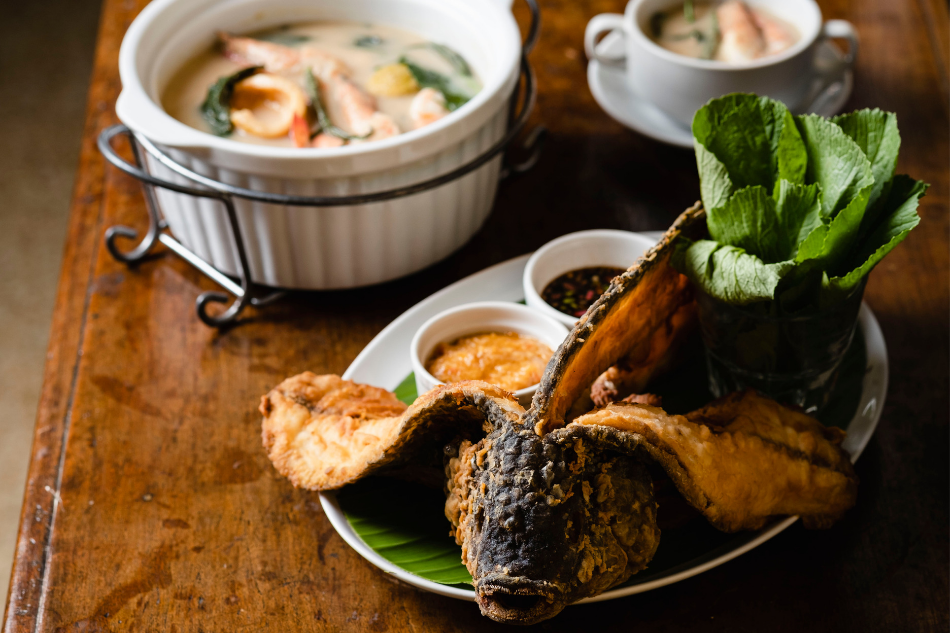Manila’s café culture may have begun with a simple cup of chocolate-eh | ABS-CBN
ADVERTISEMENT

Welcome, Kapamilya! We use cookies to improve your browsing experience. Continuing to use this site means you agree to our use of cookies. Tell me more!
Manila’s café culture may have begun with a simple cup of chocolate-eh
Manila’s café culture may have begun with a simple cup of chocolate-eh
Michaela Fenix
Published Jul 21, 2019 08:46 AM PHT
|
Updated Jul 21, 2019 09:00 PM PHT
Café Adriatico was an afterthought of Larry J. Cruz. His main business was selling antique Filipino furniture in the latter seventies at the corner of Macario Adriatico Street and Remedios Circle in Ermita, Manila. But a friend encouraged him to enliven the dormant Koleksyon shop into a café. And that simply was how Café Adriatico was born in 1980.
Café Adriatico was an afterthought of Larry J. Cruz. His main business was selling antique Filipino furniture in the latter seventies at the corner of Macario Adriatico Street and Remedios Circle in Ermita, Manila. But a friend encouraged him to enliven the dormant Koleksyon shop into a café. And that simply was how Café Adriatico was born in 1980.
Almost 40 years after, Café Adriatico still stands on that corner, the mother ship of the LJC Restaurant Group that is comprised of nine restaurants, not including their branches, a bakery, a resort in Pampanga, and the Group Catering Service.
Almost 40 years after, Café Adriatico still stands on that corner, the mother ship of the LJC Restaurant Group that is comprised of nine restaurants, not including their branches, a bakery, a resort in Pampanga, and the Group Catering Service.
Café Adriatico is supposed to have ushered in the café culture in the country. Larry Cruz had experienced cafés in Paris when his father, Emilio Aguilar Cruz, was appointed ambassador to the United Nations Educational Scientific and Cultural Organization (UNESCO). Thus, his Manila café defined many of the cafés that came after—having wooden furniture (not necessarily antique), serving good food (not necessarily Filipino), an ambience of casual ease, a watering hole which means a gathering place, a description that is as antique as the furniture in the first year of Café Adriatico.
Café Adriatico is supposed to have ushered in the café culture in the country. Larry Cruz had experienced cafés in Paris when his father, Emilio Aguilar Cruz, was appointed ambassador to the United Nations Educational Scientific and Cultural Organization (UNESCO). Thus, his Manila café defined many of the cafés that came after—having wooden furniture (not necessarily antique), serving good food (not necessarily Filipino), an ambience of casual ease, a watering hole which means a gathering place, a description that is as antique as the furniture in the first year of Café Adriatico.
The menu art is by his talented father who was a writer, painter and, because he hated the word “gourmet,” it must be best to call him an “eater.” It contains the café’s facade, a young girl looking very 1920s drinking her chocolate, and scenes from Remedios Circle, all in the style of New Yorker magazine. Later, Larry Cruz paid tribute to his father by opening Abe Restaurant. He didn't leave out his mother when he opened Fely J’s.
The menu art is by his talented father who was a writer, painter and, because he hated the word “gourmet,” it must be best to call him an “eater.” It contains the café’s facade, a young girl looking very 1920s drinking her chocolate, and scenes from Remedios Circle, all in the style of New Yorker magazine. Later, Larry Cruz paid tribute to his father by opening Abe Restaurant. He didn't leave out his mother when he opened Fely J’s.
ADVERTISEMENT
Café Adriatico’s most famous beverage is, ironically not coffee, but Chocolate Eh, a thick chocolate drink (eh for espeso or espresso). When it was introduced, it came in a Rizal demitasse, an antique cup made of fine china with designs sometimes of delicate flowers and had the national hero Jose Rizal's signature. But if the café diner paid close attention to what was written on the menu, then the provenance of the tablea (chocolate tablets) should be known. It comes from Pampanga, Cruz’s home province, where the tablea has ground peanuts mixed in.
Café Adriatico’s most famous beverage is, ironically not coffee, but Chocolate Eh, a thick chocolate drink (eh for espeso or espresso). When it was introduced, it came in a Rizal demitasse, an antique cup made of fine china with designs sometimes of delicate flowers and had the national hero Jose Rizal's signature. But if the café diner paid close attention to what was written on the menu, then the provenance of the tablea (chocolate tablets) should be known. It comes from Pampanga, Cruz’s home province, where the tablea has ground peanuts mixed in.
That first LJC restaurant and its history was only known to this writer when, in the early part of 2000, Larry Cruz asked me to write about the dishes of all LJC restaurants for the book Malate: A Matter of Taste. It was a lunch interview that stretched on to merienda because of the many dishes in his many restaurants, those that had closed and those still around. He had experimented with different cuisines (Italian, Chinese, Asian specialty, Middle Eastern) and even different entertainment businesses (theater, disco, bookstore).
That first LJC restaurant and its history was only known to this writer when, in the early part of 2000, Larry Cruz asked me to write about the dishes of all LJC restaurants for the book Malate: A Matter of Taste. It was a lunch interview that stretched on to merienda because of the many dishes in his many restaurants, those that had closed and those still around. He had experimented with different cuisines (Italian, Chinese, Asian specialty, Middle Eastern) and even different entertainment businesses (theater, disco, bookstore).
Best-selling dishes of all the restaurants were retained at those that were still operating. He recounted how each was included, some of them based on his favorite dishes from other restaurants because, like his father, he was an “eater outer.”
Best-selling dishes of all the restaurants were retained at those that were still operating. He recounted how each was included, some of them based on his favorite dishes from other restaurants because, like his father, he was an “eater outer.”
Much later when the book was almost done, he invited me again to Café Adriatico for a group picture of all those who contributed. Little did we know that the picture would be on the cover. But it meant more to me because it was a record of myself at LJC’s first business enterprise and where my friends and family would repair to after attending events at the Cultural Center or parties in the area. It seemed like a chic way to finish the day. Larry Cruz would have scoffed at that statement but would approve when I tell him that Café Adriatico provided comfort food before snoozing—ensaymada with chocolate eh, callos with rice, suman sa lihiya.
Much later when the book was almost done, he invited me again to Café Adriatico for a group picture of all those who contributed. Little did we know that the picture would be on the cover. But it meant more to me because it was a record of myself at LJC’s first business enterprise and where my friends and family would repair to after attending events at the Cultural Center or parties in the area. It seemed like a chic way to finish the day. Larry Cruz would have scoffed at that statement but would approve when I tell him that Café Adriatico provided comfort food before snoozing—ensaymada with chocolate eh, callos with rice, suman sa lihiya.
It was also a surprise when Cruz asked me to contribute a recipe which he wanted to put into the menu of Abe Restaurant. Since I’m not a chef or a cook, I didn’t have any of my own. He agreed that I could choose my favorite LJC dish and he would have it renamed. To this day, many people have ordered my name when it really is Crispy Tadyang (deep-fried beef ribs). What an honor.
It was also a surprise when Cruz asked me to contribute a recipe which he wanted to put into the menu of Abe Restaurant. Since I’m not a chef or a cook, I didn’t have any of my own. He agreed that I could choose my favorite LJC dish and he would have it renamed. To this day, many people have ordered my name when it really is Crispy Tadyang (deep-fried beef ribs). What an honor.
ADVERTISEMENT
The LJC restaurants operating today mostly serve Filipino food. Lorenzo's Way which in the beginning was conceptualized by Larry Cruz as serving Middle Eastern cooking had to change its menu, steering it to the direction of Filipino cuisine.
The LJC restaurants operating today mostly serve Filipino food. Lorenzo's Way which in the beginning was conceptualized by Larry Cruz as serving Middle Eastern cooking had to change its menu, steering it to the direction of Filipino cuisine.
The first of LJC restaurants to do that was Bistro Remedios (named after the corner street it was on). It was launched in 1984 some steps away from Café Adriatico, mainly featuring Pampango cooking. It was the logical next step, an eating place that highlights Cruz's home province's cuisine.
The first of LJC restaurants to do that was Bistro Remedios (named after the corner street it was on). It was launched in 1984 some steps away from Café Adriatico, mainly featuring Pampango cooking. It was the logical next step, an eating place that highlights Cruz's home province's cuisine.
For many Manilans, the bistro was an introduction to sinigang sa bayabas (now known as bulanglang), the bopis (sautéed pork heart and lungs), and crunchy kamaru (mole cricket) considered at the time as extreme cuisine.
For many Manilans, the bistro was an introduction to sinigang sa bayabas (now known as bulanglang), the bopis (sautéed pork heart and lungs), and crunchy kamaru (mole cricket) considered at the time as extreme cuisine.
In 1988, Karihan Karitela opened on Roxas Boulevard where the Bamboo Rice was born. Bistro Burgos in Makati was known for its kare-kare and even had its own Kare-Kare Klub. Both restaurants have closed but those dishes live on.
In 1988, Karihan Karitela opened on Roxas Boulevard where the Bamboo Rice was born. Bistro Burgos in Makati was known for its kare-kare and even had its own Kare-Kare Klub. Both restaurants have closed but those dishes live on.
In today's restaurant scene, especially in Metro Manila, it is the senior citizen age group that crowds the restaurants founded in the seventies and eighties, including the LJC restaurants. It must feel like coming home, especially those who have retired here. The return of the natives may be to re-live past dates or group outings, most certainly to taste again the kare-kare, pako salad, sinuam na mais, laing.
In today's restaurant scene, especially in Metro Manila, it is the senior citizen age group that crowds the restaurants founded in the seventies and eighties, including the LJC restaurants. It must feel like coming home, especially those who have retired here. The return of the natives may be to re-live past dates or group outings, most certainly to taste again the kare-kare, pako salad, sinuam na mais, laing.
ADVERTISEMENT
Cruz's biography was entitled Larry Can't Cook, probably to stress the fact that one didn't have to know how to cook to build a successful restaurant chain. One has to know how to eat, certainly, which presupposes highly discerning taste buds. One has to be good with formulating concepts, the ambience, for instance. One has to be creative even with just how to name the dishes.
Cruz's biography was entitled Larry Can't Cook, probably to stress the fact that one didn't have to know how to cook to build a successful restaurant chain. One has to know how to eat, certainly, which presupposes highly discerning taste buds. One has to be good with formulating concepts, the ambience, for instance. One has to be creative even with just how to name the dishes.
Examples of these are in many of the menus and speak of Cruz’s ability to coin them. Squid Tactics is tender squid in spicy sauce. Knockout Knuckles is a whole crispy pata deep-fried in garlic and chilies. Binukadkad na Crispy Plapla is big Nile tilapia fried crisp and presented in such a way as to make it seem like the fish is flying. They are all memorable and imaginative, part of the legacy of Larry J. Cruz.
Examples of these are in many of the menus and speak of Cruz’s ability to coin them. Squid Tactics is tender squid in spicy sauce. Knockout Knuckles is a whole crispy pata deep-fried in garlic and chilies. Binukadkad na Crispy Plapla is big Nile tilapia fried crisp and presented in such a way as to make it seem like the fish is flying. They are all memorable and imaginative, part of the legacy of Larry J. Cruz.
For the LJC Group’s list of restaurants, visit http://ljcrestaurants.com.ph
Photographs by Justin de Jesus
ADVERTISEMENT
ADVERTISEMENT















